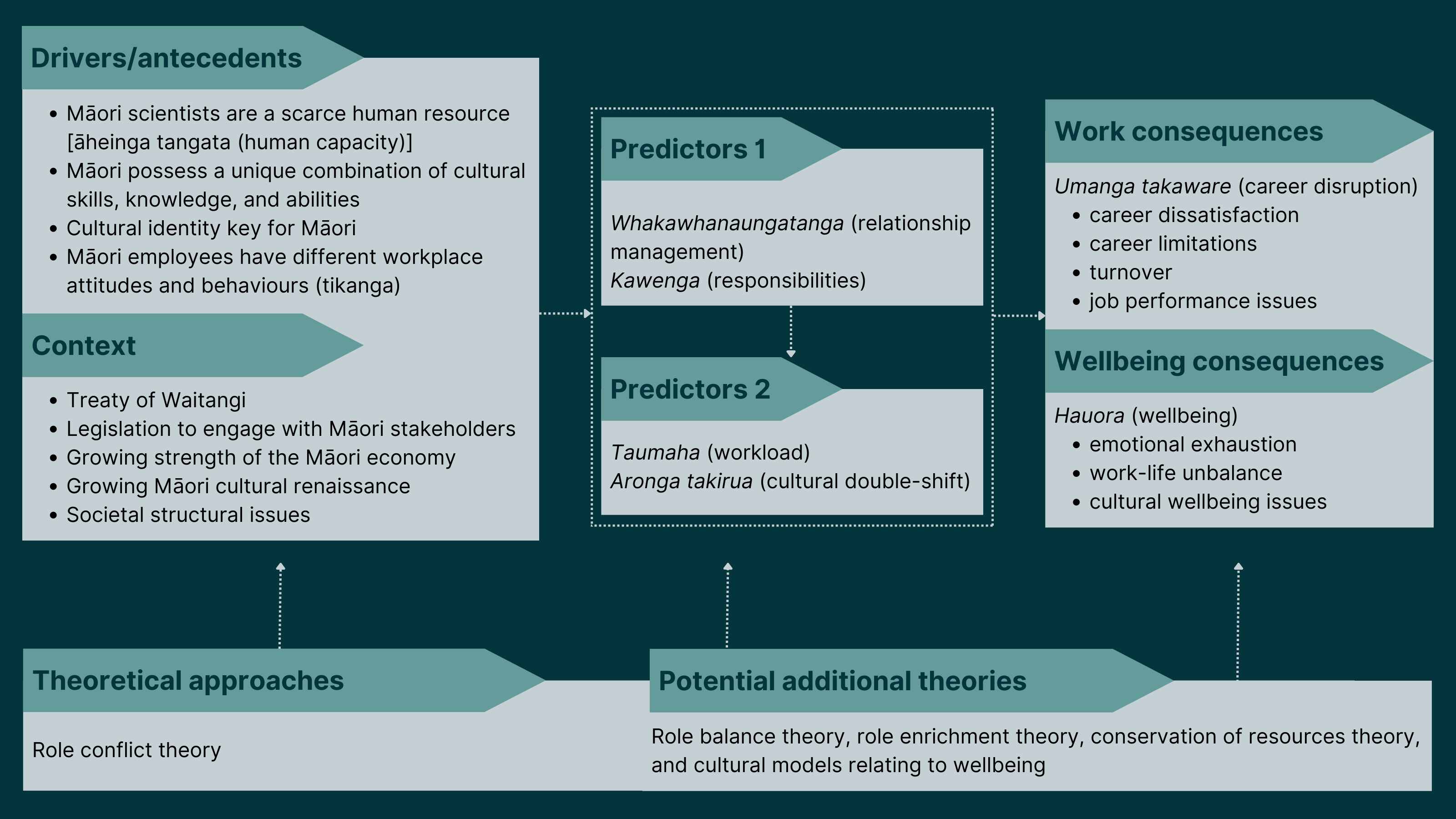The cultural double shift of Māori scientists
For indigenous employees, cultural identity can lead to critical issues around workload and pressures.

Indigenous philosophy and practice offer many insights into contemporary management thinking. However, the burden to provide this knowledge and uphold these relationships primarily falls on indigenous employees. This creates pressure and role conflict that can result in detrimental outcomes.
Working overtime to provide expertise
In the context of Aotearoa-New Zealand’s science sector, the indigenous population plays a unique role because of the national legislative obligation to engage with Māori in science and innovation. This policy, known as Vision Mātauranga, seeks to unlock the innovation potential of Māori knowledge, resources, and people. While this policy is beneficial for engagement with Māori communities and stakeholders it creates a unique environment for Māori employees where role conflict around cultural obligations may be increased.
Aronga takirua has detrimental effects
This study explores the cultural roles in the work experiences and lives of Māori scientists to understand these unique cultural obligations and develops a theoretical model of drivers and consequences facing these employees. In this investigation, the researchers use interviews, surveys, focus groups, open discussions, observation techniques, and employment agreement analysis.
What they find is that representing Māori culture, science, Vision Mātauranga, and engaging with Māori stakeholders places intense additional demands on Māori scientists. While there are some cultural benefits around these kinds of engagement, the outcomes for Māori scientists appear largely detrimental to their health and employment. There are no specific strategies that Māori scientists use to balance these demands which suggests that structural intervention is needed. While the Vision Mātauranga policy has been beneficial for the engagement with Māori communities and stakeholders, it has had unintended consequences. Placing these additional demands primarily on a small Māori scientist workforce is likely to have long-term detrimental effects.
These findings relate to what the researchers coin aronga takirua or cultural double-shift. This is the central theme of the research that highlights how Māori scientists work in multiple roles with a dual focus (western and Māori). Many refer to this as ‘double labour’. However, it is more than just labour, aronga takirua or cultural double-shift also captures the cultural drivers, with these drivers and consequences of aronga takirua or cultural double-shift outlined in the figure below.

Find out more here

Aronga takirua and hauora
Māori scientists are experiencing burnout because of the burden that is placed on them to provide their expertise on mātauranga Māori.

HRM counteracting aronga takirua
Human resource managers can counteract the detrimental effects of aronga takirua (cultural double shift) on Māori scientists.

Pākehā intermediaries in Māori research
Exploring the impact of Pākehā intermediaries in Māori-focused research and innovation.
